Article by Ruby Dalmer
In the infamous land of bubble tea, Taiwan’s colourful coffee culture is a surprising delight of international student life on the island. For most of its history, Taiwan’s beverage scene has been dominated by tea products. But over the past 30 years, these long-established taste preferences have been changing.
As Taiwan now takes home the title of third-largest coffee consumer in Asia, the coffee boom has produced a cafe boom. As of 2023, there were more than 17,000 cafes scattered around the island — with many of the brightest stars based in Taipei[1].
As an international student, cafe culture is a major joy hidden within the rhythms of life at NCCU. Read on to unpack the strangely scandalous history of cafes in Taiwan, analyse cafes as critical “third spaces” in society, and learn about other NCCU students’ journeys into cafe culture in Taipei.
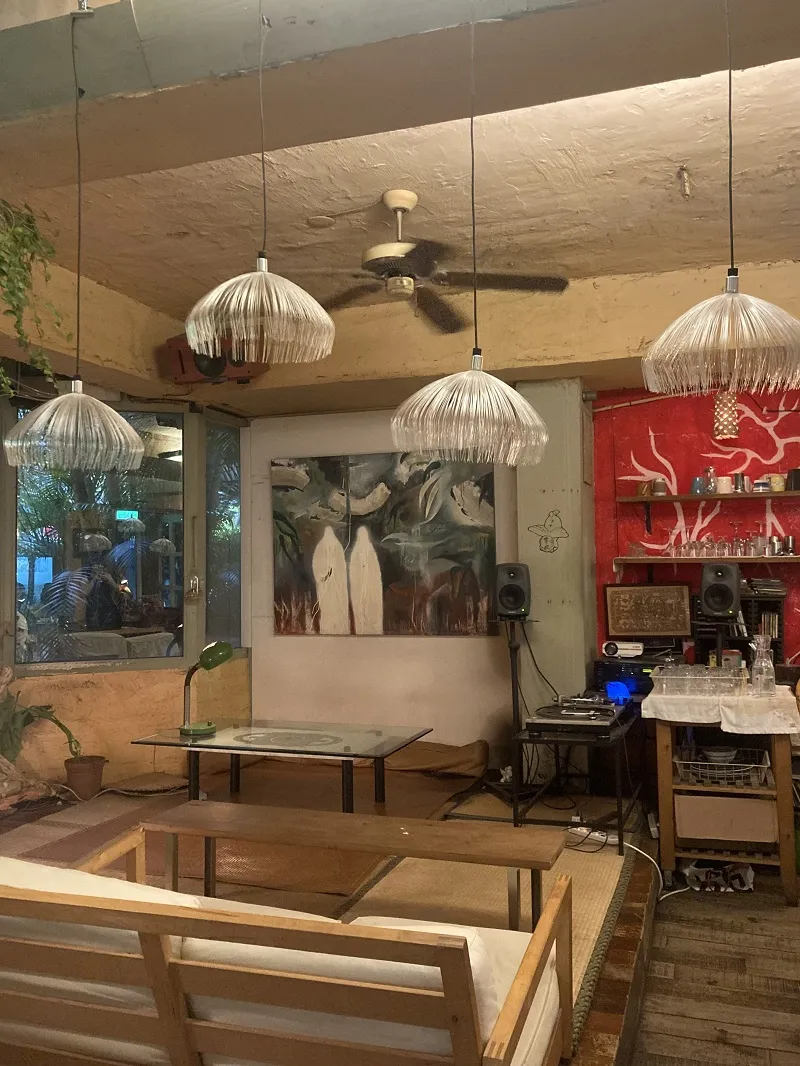
▲Yung Flea cafe
Cafes first made their way onto the island just over a century ago. While Western settlers introduced the first coffee plants, coffee consumption only took off during Taiwan’s Japanese colonial period[2]. During this period, cafes were seen as symbols of modernity — and spending time in these spaces was a way to demonstrate one’s cosmopolitan qualities[3].
This embrace of modernity and cosmopolitan sensibilities bled into the presentation style of early Taiwanese cafes. Japanese-era cafes were sites of Western-style drink or food and furniture — blended with a distinctly Japanese aesthetic[4]. Electrical lighting was paired with European seating and sub-tropical indoor plants a plenty. By the 1930s, there were more than 400 of these cafes operating on the island.
Interestingly, these early cafes exclusively employed women — with waitresses fulfilling a similar role to that of bar hostesses or geishas. Instead of working for tips however, these young women would earn a fixed salary through serving drinks and sometimes performing for the mostly male clientele[5].
Between the 1950s-1970s, Taiwanese cafe culture became embroiled in scandal. There were accusations of mistreatment amongst the young waitresses, unruly customers acting out of jealousy, and instances of young couples wanting some questionably-intimate alone time. The government had to step in. Regulation was introduced to outlaw dim lighting and prohibit private rooms — measures
designed to discourage ‘bad behaviour’[6].
It wasn’t until the late 1990s that cafe culture recuperated its former glory — and then skyrocketed in popularity. The introduction of Starbucks to the island marked a new wave of coffee in Taiwan[7]. This new wave was defined by espresso-based milk drinks, a much milder taste than the Japanese-era predecessor. With a new taste profile, this is the moment many Taiwanese became accustomed to coffee culture.
Nowadays, more than 40% of Taiwan’s population drink at least one cup of coffee a day. In Taipei alone, there are nearly 900 cafes currently open for business[8]. On any given weekend, the hundreds of cafes across the city will be teeming with young people.
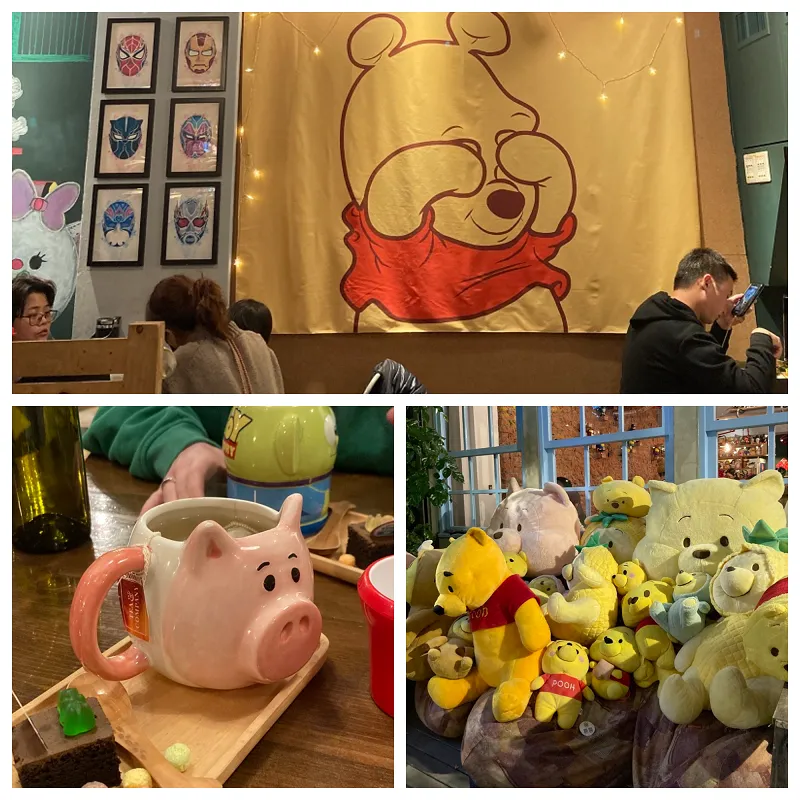
▲ keychain and soft toy cafe
These cafes come in all shapes and sizes too. One of my favourite things about Taipei’s Cafe scene is that in addition to the stock standard cosy cafe vibe, there is also a fascinatingly high number of quirky (to say the least) themed cafes.
Taipei is home to an Alpaca Cafe — where you can sip your coffee in close quarters with the cafe’s three towering Alpaca permanent residents. If that doesn’t tickle your fancy, you can head to Modern Toilet Restaurant — a toilet-themed cafe where you can eat and drink a variety of defection-inspired creations. Or maybe you’re a film fanatic? If so, head to the Art Reading Cafe — a shrine to Wes Anderson’s Grand Budapest Hotel — and home of fantastic live music.
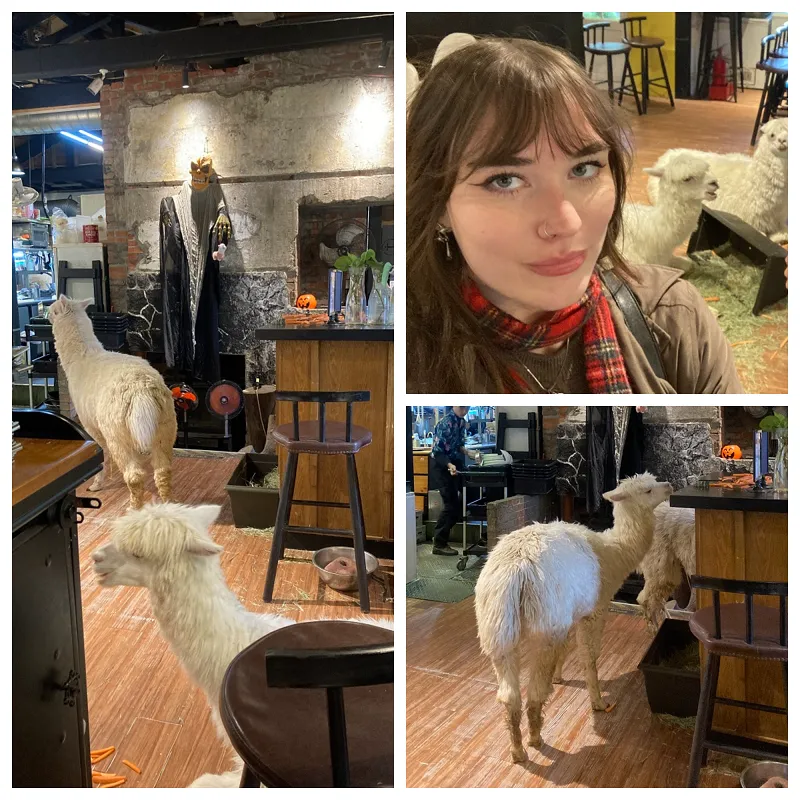
▲Alpaca Cafe — where you can sip your coffee in close quarters with the cafe’s three towering Alpaca
If none of that resonates, perhaps a cafe designed to quieten anxieties through doing puzzles will hit the spot. If so, check out Galette Cafe in Da’an. A final gimmicky cafe you can’t miss is Xiao Chu is flying! This is a truly special place. Here, you select artfully illustrated postcards of what you want to order and take them up to the counter. The best thing? You get to keep these postcards when you leave — scoring free art and memories of the food/drink you ordered and the company you shared.
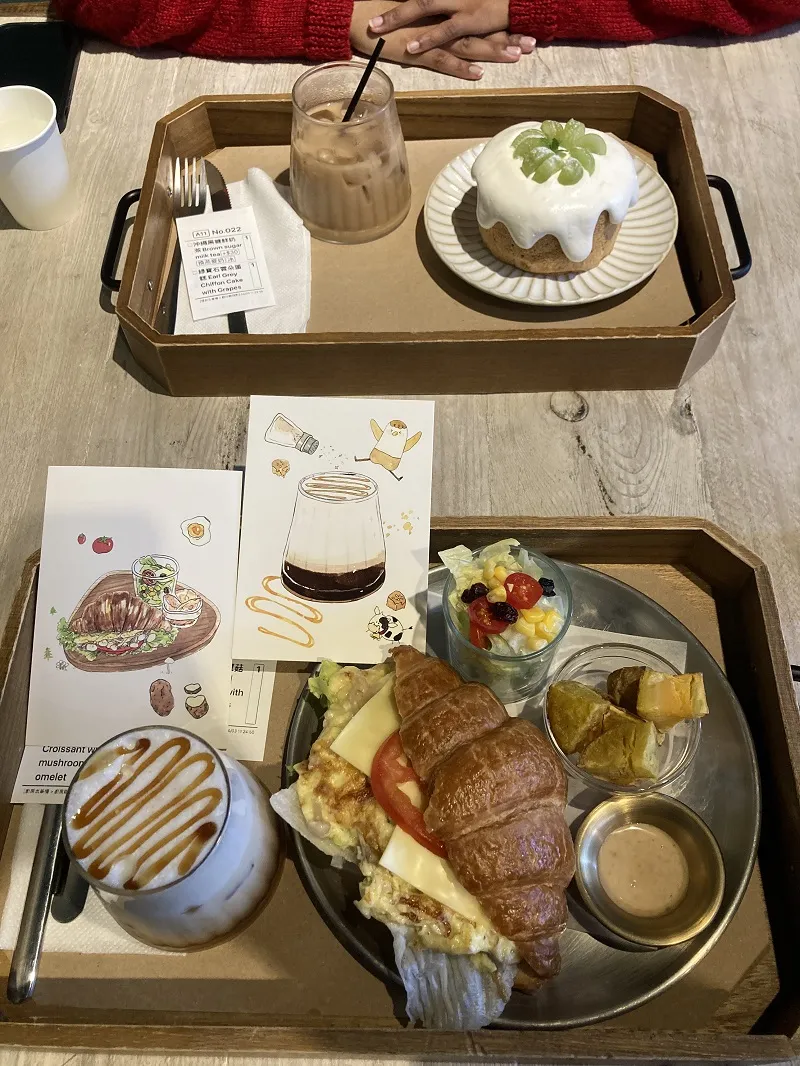
▲Xiao Chu is flying-You get to keep these postcards when you leave — scoring free art and memories of the food/drink you ordered and the company you shared.
At NCCU, it has become a fun scavenger hunt to discover the best little hidden gem cafes near campus. It’s a way I connect to other people – not only through going to cafes together, but also through sharing different recommendations and hole-in-the-wall must-sees. These spaces help build community. They also are great for academics too – often serving as a great way to change up my study environment and explore somewhere new.
Cafe’s as our social selves
Cafe’s form an essential part of our social selves. They can be considered a classic example of a third space – a “public place[s] that host[s] the regular, voluntary, informal, and happily anticipated gatherings of individuals beyond the realms of home and work”[9]. It is a liminal space – neither completely public or private. Within the urban confines of a cafe, we meet with each other– and this act alone builds a strong social and civic ethic within democratic societies.
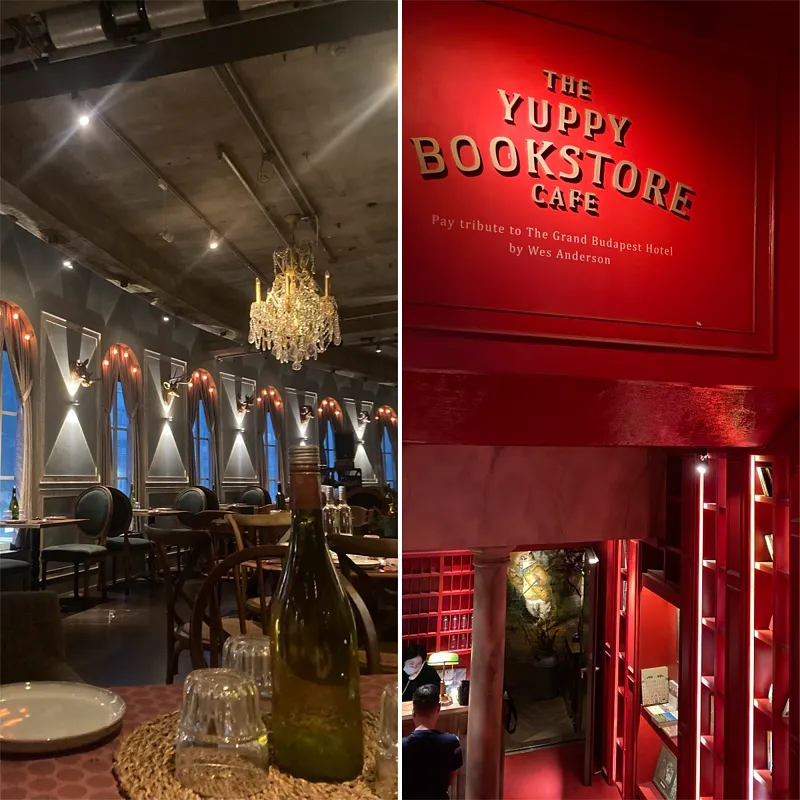
▲the Art Reading Cafe — a shrine to Wes Anderson’s Grand Budapest Hotel
With origins in sixteenth-century coffee houses, cafes have always been locales where people from all walks of life come together. They are rare spaces where classes and cultures converge. Architectural Digest magazine spoke of the cafe as “the greatest social revolution since the launderette in 1954”[10]. Over an innocent cup of coffee, social relationships are actively negotiated and reconfigured.
German Philosopher Jürgen Habermas’ concept of the public sphere (1962) helps explain this phenomenon. Habermas analyses how third spaces like cafes help support and sustain the civic health of cities — strengthening democracies in the process. He argued the ‘public sphere’ speaks to a culture of private citizens coming together to make collective use of their capacity to reason — to talk about things that matter to society[11]. Public political affairs were granted an institutional location — primarily in coffeehouses.
For Habermas, cafes promote democratic, pro-social practices in a few key ways. Firstly, they promote the art of conversation — where mingling with less familiar others is the name of the game. We flex our social muscles by exercising our listening and sharing skills. We also forge connections to a particular place, perhaps by becoming regulars somewhere. Cafes also have a relatively low entry cost – the purchase of one drink – which makes it more accessible than alternative social spaces like bars or restaurants. Finally, when we’re in the walls of a cafe, we must ‘be’ in society. We must not speak too loud, show respect to staff, and conduct our behaviour in a ‘civilised’ manner. All of these aspects contribute to the cafe as a democratised public sphere, where our sociality strengthens our societies.
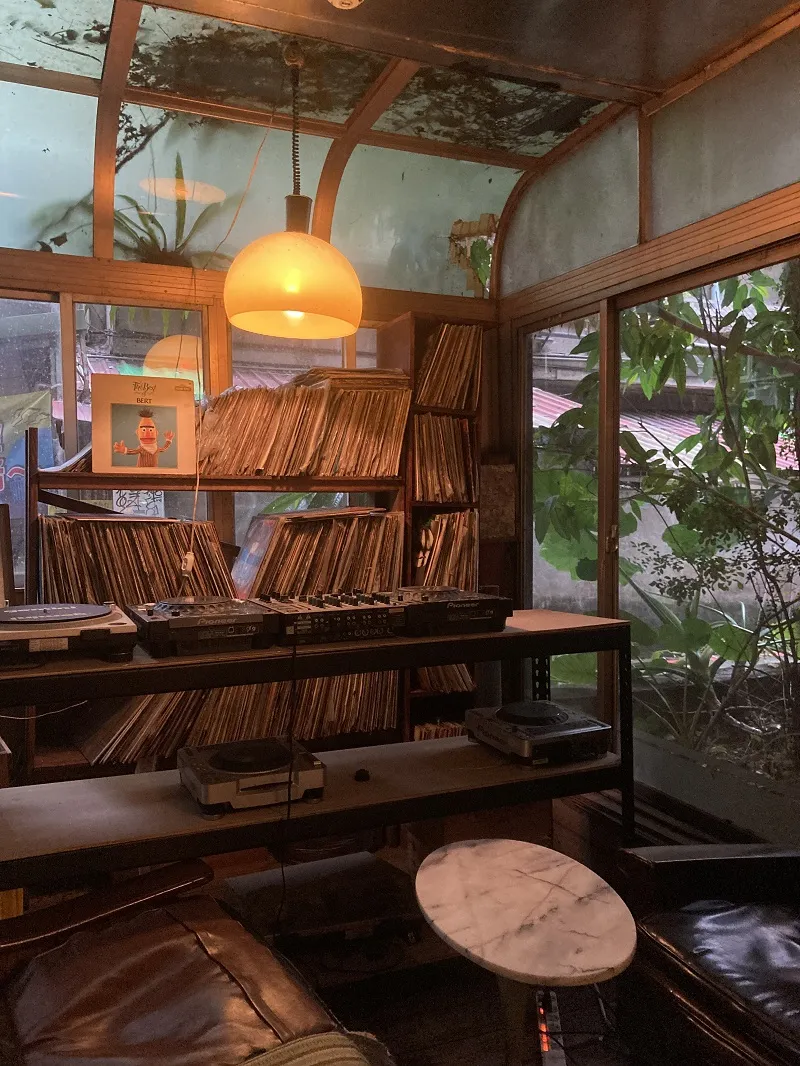
▲Yung Flea in Gongguan
Perspectives from NCCU students:
Soren Gunzinger (Switzerland)
I think Taiwan has a great cafe culture! Because it’s more brave than in Switzerland sometimes, proposing fancy crazy drinks like a charcoal blueberry sparkling coffee or stuff of that sort. Also I’ve been mostly happy about the taste of their coffees.
I either go alone to work, and mostly order black tea, or with a friend which would make me more likely to order a coffee (I love sparkling Sicilian coffees in those cases).
I really love Yung Flea in Gongguan — for their music in particular, how it shifts from one song to the other. The sound quality is good too now that I think about it. Otherwise, there’s a few shoutouts I should make; Cafe de Cube for having the sweetest cafe owner and very comfy chairs. And Kengai for being near Nanjishiao and having a nice interior.
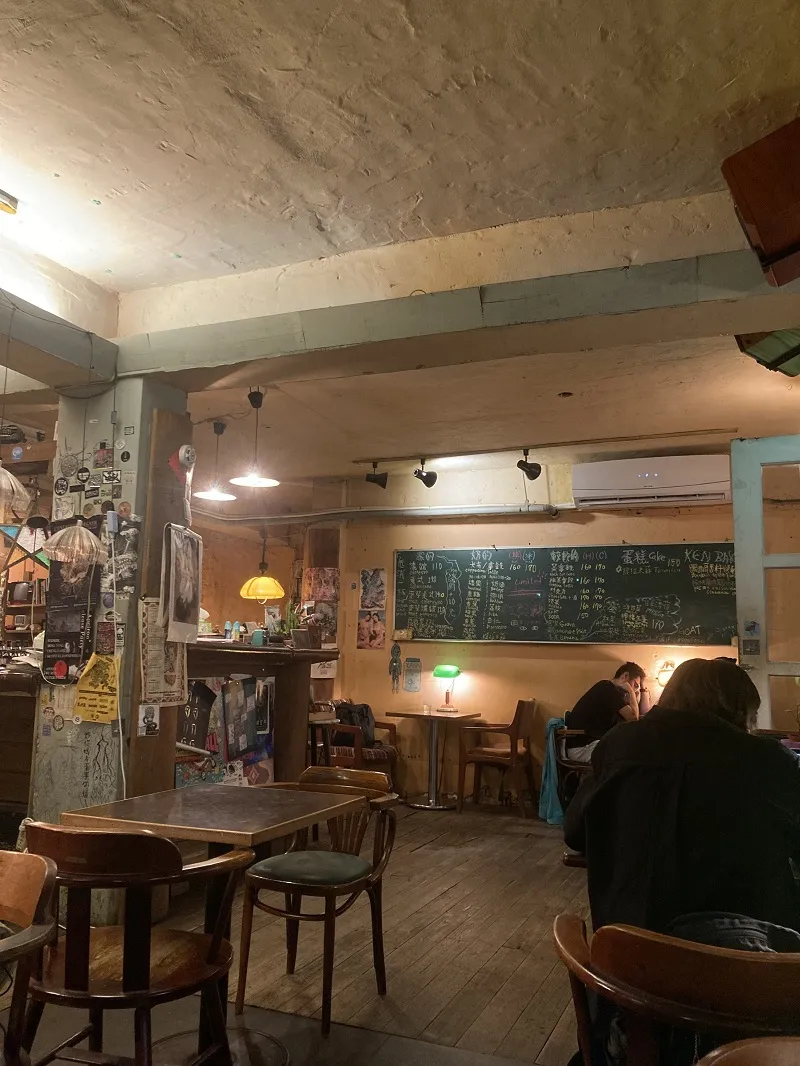
▲Yung Flea in Gongguan
Gemma Dallas (United States)
There are some great cafes I love in Taiwan. They often provide Wifi, places to plug in for your laptop — especially if you go to Gongguan near NTU (National Taiwan University).
Taiwan’s cafe culture feels much more appealing to me than the US’s. Maybe it’s because things feel cheaper to me or because I don’t feel guilty if I just buy something small and study. I also feel like the cafes here are super interactive, there’s stuff to do there and it’s all very creative.
Whereas in the US, you kind of grab a cup of coffee on the go — there’s not a huge variety of food and they tend to close a lot earlier — around 3pm. They are open much later here. Studying isn’t really an option in US cafes either. Taiwan also has the super ‘instagrammable’ cafes — like super trendy, aesthetic ones — which is also quite unique.
I typically go to work or study — but that’s usually with friends. So I’ll work or study and also chat with friends.
I really like to go to Ruins — across the bridge from NCCU. It has a cat! Or Picnic Cafe in Gongguan because they have really good scones. I’m obsessed with those scones.
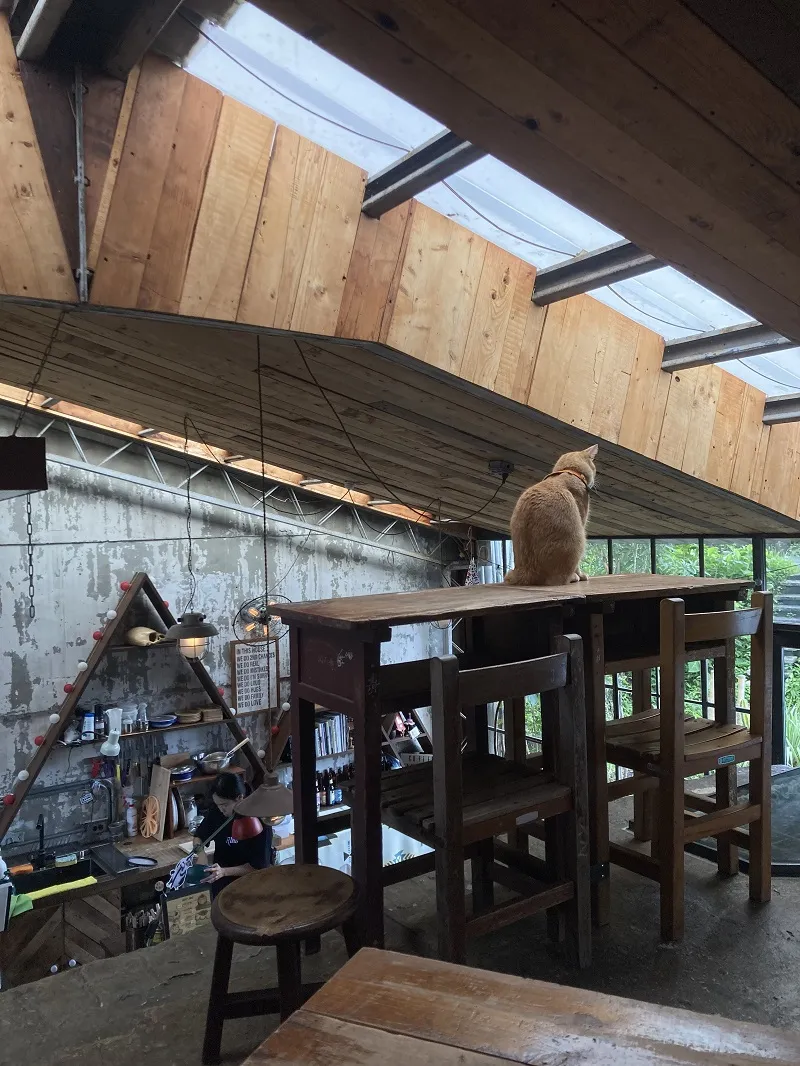
▲Ruins cafe— across the bridge from NCCU.
Prajna Ukabhai (South Africa)
Taiwan has good cafe culture because there is so much variety. They function as different spaces for different people. And there’ll often be something in particular that draws people there. For example, right now pistachios are very trendy, so lots of places have a special menu item with pistachio — like coffee, cake, or ice cream.
South Africa doesn’t have as much of a cafe culture. A lot of the time, people go to chains. But there, people often go to cafes for the food. I noticed here that cafes often just serve desserts and drinks. So in South Africa — yes there are cafes, but they serve a slightly different function. Also, back home it is more of a special treat — I go less often. It’s more affordable here.
I think Taiwanese cafes are amazing at creating a great ambience. They’ll have a specific vibe in mind and do everything to embody that. People look for a certain energy/aesthetic. There’s huge emphasis on the space, the decor, the lighting. I also think because there are so many cafes in Taiwan, they are able to pick up on trends very quickly. You have to be drawn there for more than just food/drink — photo opportunities also matter. What cafes you go to says something about you too — it’s identity-building.
I currently have 68 places saved on my cafe list! But I love the Postcard cafe — Xiao Chu is Flying! TJ cafe — the vibe is so nice there. I love the puzzle cafe too — Galette Cafe. Pica Pica cafe and The Quiet Light are also great. Amal Cafe by the riverside is nice too — most people bike there.
Bibliography:
Su, S. (2018, September 25). The appeal of café culture. Taiwan Business TOPICS. https://topics.amcham.com.tw/2018/09/the-appeal-of-cafe-culture/
[1] Issak, I. (2024). Famous for bubble tea, Taiwan is now brewing a path to coffee fame. ABC News. https://www.abc.net.au/news/2024-10-26/taiwan-coffee-capital-of-east-asia/104510622
[2] Gakuo, P. (2022). A guide to the Taiwanese coffee sector. Perfect Daily Grind. https://perfectdailygrind.com/2022/02/a-guide-to-the-taiwanese-coffee-sector/
[3] Issak, I. (2024).
[4] Tham, D. (2019). A coffee-lover’s guide to Taiwanese cafes. Taipei Times. https://www.taipeitimes.com/News/feat/archives/2019/11/09/2003725511
[5] Ibid.
[6] Ibid.
[7] Charette, R. (2021). The Great Taiwan Coffee & Tea War. Taiwan Everything. https://taiwaneverything.cc/2021/02/26/coffee-tea/
[8] Tham, D. (2019).
[9] Steigemann, A. M. (2017). Social practices in a café: community through consumption?. Geographica Helvetica, 72(1), 45-54.
[10] Felton, E. (2012). Eat, Drink and Be Civil: Sociability and the Cafe. M/C Journal, 15(2). https://doi.org/10.5204/mcj.463
[11] Duvenage, P. (2005). Habermas, the public sphere and beyond.